The 10 Worst Mistakes You Can Make with a Moisture Meter
Moisture meters are essential tools for anyone involved in woodworking, whether you’re laying down wood flooring, building furniture, or crafting musical instruments. However, using a moisture meter incorrectly can lead to costly mistakes and compromised project outcomes.
In this article, we will explore the ten worst mistakes you can make with a moisture meter and provide valuable insights on how to avoid them.
From measuring wood with water on it to using a meter that’s out of calibration, we will address common misconceptions and offer practical tips for accurate moisture readings. We will also discuss the importance of using the correct species setting, identifying embedded metal in the wood, and understanding the limitations of moisture meters when it comes to detecting mold.
- 1. Measuring wood with water on it
- 2. Using a meter that’s out of calibration
- 3. Using the wrong species setting
- 4. Not identifying where metal is embedded in the wood
- 5. Using a moisture meter to detect mold
- 6. Measuring moisture content at only one spot
- 7. Don’t leave your moisture meter in the rain
- 8. Buying a cheap moisture meter for your business
- 9. Expecting accurate moisture readings for non-wood materials
- 10. Not using a moisture meter at all
A moisture meter is a necessary and valuable tool, whether you lay down wood flooring, build furniture, or fashion violins. Whatever type of woodworking you do, you need to use the moisture meter properly, or it’s not doing you – or your project – any good.
Listen, using a moisture meter isn’t rocket science, but there is a right and wrong way. We covered the best practices for using a pinless moisture meter. Now it’s time to call out the most common and worst mistakes we see people making with a pin or pinless moisture meters.
1. Measuring wood with water on it
You’d think common sense would send a red flag about trying to take a moisture measurement when the wood’s surface is wet. Some people think that since the meter measures moisture levels below the surface, surface moisture isn’t an issue. It is. Whether it’s condensation or something spilled, any surface water on the wood will interfere with the meter’s reading.
If you see surface moisture, wipe down the piece of wood. Give it some time to dry, considering how much moisture you had to wipe off. Since there’s a good chance that some of the surface moisture got absorbed into the wood, you may want to consider how that will impact the reading if you don’t give the wood a good chunk of time to dry out.
Some meters have been designed to minimize readings from the surface moisture of wood, while others are highly sensitive to moisture at the surface. In some meters, only a slight amount of surface moisture can significantly disrupt the moisture readings.
2. Using a meter that’s out of calibration
Using a moisture meter that’s not calibrated is like that old cliché, “Ask stupid questions, get stupid answers.” Instead, we say “Use an uncalibrated meter, get an uncalibrated reading.” It’s no good.
This raises the question of whether your meter is out of calibration. Many come with a “built-in” calibration check. However, anything that happened that could have potentially messed up the meter’s calibration – like dropping it or leaving it outside – could very well have messed up the internal circuitry used by that “built-in” calibration check test.
In most cases, the only way to reliably check whether your wood moisture meter is calibrated is to use an external calibration tool. If it turns out that your meter is uncalibrated, you’ll have to send it back to the manufacturer for recalibration. I hope you have a spare!
If you’re working with an Orion® moisture meter, you can recalibrate the meter in the field. It’s the only line of meters that you can recalibrate yourself. Every Orion wood moisture meter comes with a factory-paired recalibration tool, the On-Demand Calibrator.
It’s so fast and easy to use; it’s simpler to just recalibrate your Orion moisture meter than to check whether or not it is calibrated. So if you’ve dropped your Orion meter – take a few minutes to recalibrate it, and you’re good to go.
3. Using the wrong species setting
The wood’s species impact both pin and pinless meters. Different species have different chemical properties and densities, impacting how the meters read a board’s moisture content.
Before starting a new batch, always check that the species setting on the meter is correct. Most wood moisture meters will have a species setting option. If it doesn’t, it should come with a correction table that you need to convert the meter’s number into the moisture content measurement.
If you often work with exotic species, look for a meter with a broader range of species adjustments. If you only occasionally work with uncommon wood species or want to know the specific gravity for a subspecies, use one of the handy species tables from Wagner Meters to refine the accuracy of the reading.
4. Not identifying where metal is embedded in the wood
If you have to measure moisture levels of wood that’s already been worked on, there may be studs or nails in places. Any metal within the scope of the moisture meter’s pins or sensor plate may interfere with that meter’s reading. If there’s a question, use a stud finder or other tool to confirm whether the metal is present. If it is, take your readings in other spots.
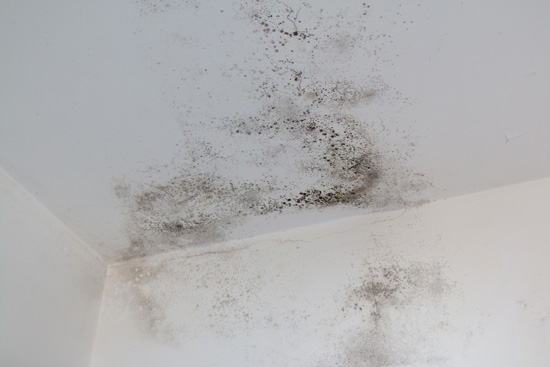
5. Using a moisture meter to detect mold
Mold can cause major damage to wood, to say nothing of its potential negative impact on people’s health. Trying to find mold is worthwhile, but a wood moisture meter can’t actually detect the mold.
A moisture meter can tell you if excess moisture exists in an area. Based on those findings, you can then conclude whether or not it is highly probable that mold may grow in that area since a high moisture condition promotes mold growth.
6. Measuring moisture content at only one spot
Wood meters measure the moisture at the spot where you’re using the meter. Moisture doesn’t exist evenly throughout the board or especially throughout a large batch of wood. You want to take readings from multiple spots to get a full picture. You may find some outlier readings.
If that outlier spot had been the only reading you took, you’d be working with an inaccurate understanding of that wood’s actual moisture condition. For example, it’s very common for boards to have a different moisture content near the ends of the board than in the middle.
The sample principle holds when measuring moisture in a stack of lumber. The larger the piece of wood or the bigger the stack, the more readings you want to take. With larger data points, you can be more confident that you’re making decisions based on an accurate reading of the piece’s or batch’s overall moisture condition.
So let’s be realistic. If your meter makes it difficult and time-consuming to take a single reading, you’re probably not going to take enough readings. Pinless meters are much easier and faster to use than pin meters, so you can efficiently and easily take all the readings you need.
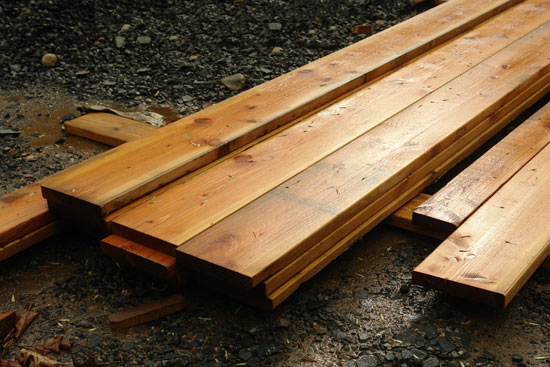
7. Don’t leave your moisture meter in the rain
This seems like another “duh” mistake, like measuring wood when it’s covered in moisture. But you’d be surprised how often people leave their meters exposed in the back of their trucks and then Mother Nature does her thing. Just because meters can read moisture in wood doesn’t mean they’ll work if moisture leaks into their circuitry.
When you’re not using the meter, put it in its case and store it someplace dry.
8. Buying a cheap moisture meter for your business
Wood moisture meters can vary in price quite a bit. The accuracy, function quality, and range of features will vary greatly among moisture meters, and the meter’s price will often reflect those differences.
If you’re an occasional hobbyist and can afford to have projects fail every once in a while, then a simpler moisture meter for $50 may work for your needs. However, if woodworking is your business, you need to make the right investment in your tools of the trade. Your wood moisture meter is an essential tool for ensuring the quality of your work and by extension, your reputation.
If you regularly work with exotic species, get a meter with an extended species setting. If you work with woods with various thicknesses, make sure your meter has dual depth options for readings.
If you work with large batches of wood, juggle multiple projects at once, or are a quality assurance manager at a plant, look for a moisture meter with top-notch data collection and management tools.
In other words, if your livelihood depends on how you handle wood, your ROI on a top-shelf wood moisture meter will be incalculable.
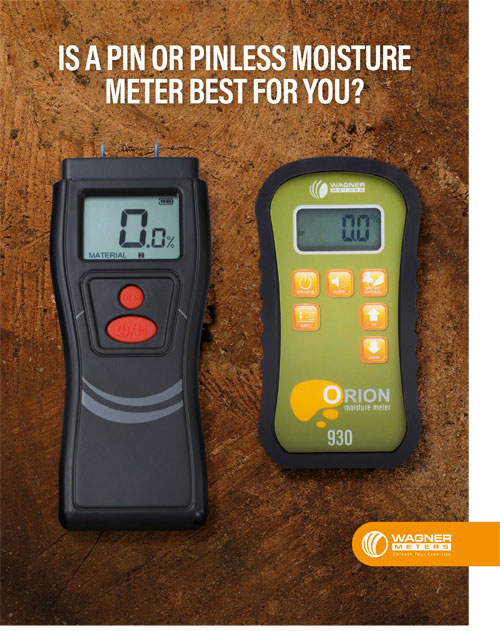
Free Download – Is a Pin or Pinless Moisture Meter Best For You?
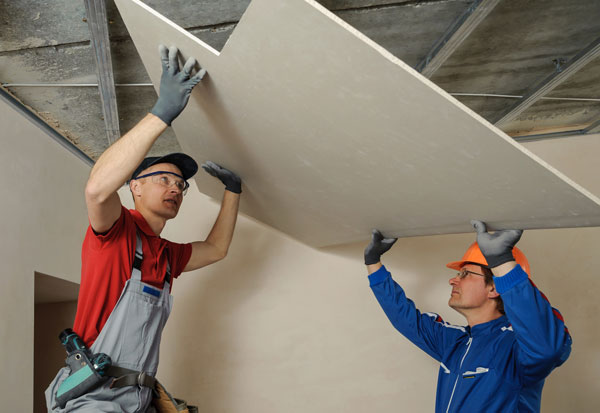
9. Expecting accurate moisture readings for non-wood materials
Many wood moisture meters have a setting to take readings from non-wood materials. This feature can be helpful, but only if you’re clear on what information the meter is giving you.
Wood moisture meters can give you a quantitative moisture measurement for a piece of wood — an absolute number. For most other materials, the meter returns a comparative reading of moisture, not a measure of the exact moisture content; these measurements can be helpful, however, to determine if one area is higher or lower in moisture content than another.
When you want to use the meter on another material, say drywall, you need to switch it to a different work mode. This work mode is called “relative moisture mode on the Orion line of meters.” The keyword here is “relative.”
This function will use similar language on different meters because, in this non-wood mode, the meters only assess whether the spot has more or less moisture than another known dry spot.
After you switch the meter to the relative mode, first use it on a spot you’re confident is dry. Then take a reading on the spot(s) where you think there may be excessive moisture. If you get a higher reading in another area, you can be confident that the areas with higher readings may have more moisture.
Meters may use a 10- or 100-point scale to indicate the relative readings. Others may use color indicators.
10. Not using a moisture meter at all
I take it back. This mistake wins the “well, duh” award.
You cannot eyeball wood’s moisture levels. Not for a single piece of wood and certainly not for a batch of wood. A dry surface doesn’t mean that the wood is adequately dry, or that it’s ready to be installed as flooring or fashioned into furniture.
Waiting a certain amount of time for the wood to acclimate is no guarantee that your wood, sitting in your specific environment, has in fact fully acclimated.
After all the apparent moisture and liquid water within the wood has evaporated is the most critical time to know exactly what the moisture content of the wood is. When all the free water (i.e., liquid water) is evaporated, the wood starts losing the water vapor bound up in its cell walls. The movement of moisture in the wood’s cell walls impacts the piece’s physical size and integrity.
Without a moisture meter, you can’t know whether the wood has reached the MC level that correlates to the point of equilibrium moisture content (EMC) with its intended surroundings.
Dr. Eugene Wengert, professor and specialist in wood processing at the University of Wisconsin-Madison’s Department of Forestry, states that wood should be dried to an MC that’s within two percentage points of the EMC where the wood is going to be used.
You can use tables and formulas to calculate the target EMC for the end-use environment. But how will you be able to tell whether that wood’s moisture content is within 2% of the end-use environment’s EMC? You’re not — not unless you have an accurate reading of the wood’s MC from a quality wood moisture meter.
The process for ensuring the wood you’re working with has reached an acceptable moisture condition is pretty simple: Use a high-quality wood moisture meter consistently and properly. So be the woodworker that avoids the worst moisture meter mistakes, and save yourself the heartache of failed projects.
Can a Moisture Meter Be Wrong?
A moisture meter can be an invaluable tool for advising finish and adhesive options or for avoiding moisture-related problems in a finished project. But if improperly used, a moisture meter will not do the job it is designed to do.
Know your meter, follow the manufacturer’s instructions and be sure you are choosing the meter that best suits your purposes. Then you’ll easily avoid those costly mistakes.
If you want to learn more about our wood moisture meters you can review our Wood Moisture Meter Studies and Peer Reviews.

Jason Wright, Business Development Specialist for New Products, joined Wagner Meters in 2019. He comes to Wagner with over 35 years of experience in the flooring industry.
Last updated on February 5th, 2024

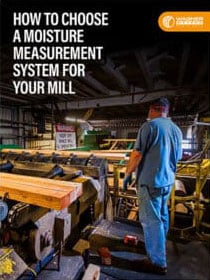


I dropped my meter 3’ then recalibrate it should I be worried
I’m sorry to hear you dropped your meter. There is no way of knowing if it needs to be repaired unless you are getting readings that are way off.
If you want us to repair the meter we would be happy to do so.
Thanks.